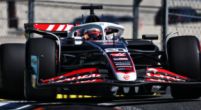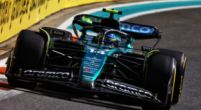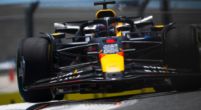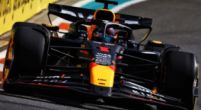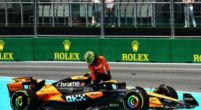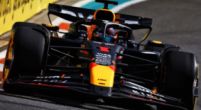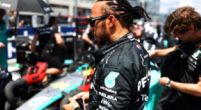Tech

F1 Tech Preview | How McLaren and Mercedes can challenge Red Bull in Mexico
After a thrilling and eventful race last weekend in Austin, the F1 circus is now moving to one of the fans’ favourite races of the season: Mexico. The Autodromo Hermanos Rodriguez is a unique circuit not only for the stadium section in the last sector, where drivers go through huge grandstands full of people, but especially for its technical features.
The track is situated at 2200 meters above sea level, which is quite an important aspect for F1 cars: the air is about 25% less dense than at sea level and significantly impacts downforce, drag and the power unit. Here’s why.
Thinner air means bigger wings
Mexico City's thinner air means that both front and rear wings generate 25% less downforce than usual. For this reason, teams decide to adopt full-downforce rear wing for this Grand Prix: since the downforce generated by the wings is less (because there is less air flowing on them), they use bigger wings to compensate for the loss of downforce caused by the thinner air.
That’s why teams decide to use maximum downforce setups even on a track with a super long straight. The less-dense air, however, also impacts drag, as it largely reduces it. With about a quarter less drag, the cars are way quicker on the straights than they would be with the same wings at sea level, which means that even draggy cars (like Mercedes’ W14 or McLaren’s MCL60) can have the chance to be super quick around here.
The engine power and cooling also change in Mexico because the engine itself provides less power. It can suck in less air. This is where turbochargers come into play: the pressure of the air sent into the combustion chamber is controlled by the turbo, and if the air is thinner, this device can spin faster to provide the same air pressure during the combustion. However, there are some “technical limits” for what concerns turbo spinning speed: the turbos’ highest speed is set at 125,000rpm, which can’t be overcome.
The bigger the turbo is, the lower the burst speed will be; this is the reason why engines with a smaller turbo are usually quicker at high-sea level circuits, like the Honda engine. Mercedes and Ferrari, who have a bigger turbo, always suffer in Mexico (because their turbo moves less air, resulting in less power from the combustion).


In conclusion, the cooling of the engine and brakes tends to be harder around this track, once again due to the thinner air. For this reason, cars usually have bigger cooling inlets and outlets and slots to cool the engine down as much as possible.
All these aspects make the Mexican race one of the toughest for the cars and the engineers, where the component choices can greatly impact the overall performance.
Which team could really have the edge on Sunday?
The big question of the weekend is which teams will be able to fight for the podium on Sunday because the answer seems less obvious than in the previous races. As always, Red Bull is the big favourite around here, with Max Verstappen winning four of the last five editions of the Mexican Grand Prix. Despite this, the RB19 doesn't suit the Autodromo Hermanos Rodriguez perfectly.
Red Bull’s car can express its full potential in the high-speed corners, while in Mexico, the only fast section is the 7-8-9 complex in the second sector, with all the other corners being medium/low-speed. Moreover, the high kerbs in the first and last sector could require a higher ride height and a softer mechanical set-up, something that’s not ideal for this car, which always needs to run a stiff mechanical set-up and as close to the ground as possible to generate downforce from the Venturi channels.
Despite this, the Milton Keynes team can have a big advantage in terms of drag and engine since the already very efficient RB19 can be even quicker on the straights this weekend, and the smaller turbo from the Honda engine could make a big difference out of the slow speed sections.
Mercedes and McLaren, however, can also perform well around Mexico: despite the bigger turbo, both teams have proved to be strong on this kind of layout, as they both fought for the win on a track like Singapore. Moreover, Mercedes also brought a new floor last time out in Austin, which seemed to have contributed to extracting more performance from the W14. A lot will depend on the cars’ ability to manage the tyres, as the lower air pressure will make it difficult for the tyres to enter the optimal working range, with the risk of overheating and graining, especially on the front axle. This will be a crucial aspect to be able to fight for the podium or even for the win in Sunday’s race.
From a technical point of view, both teams decided to run the maximum downforce rear wings already seen in Singapore, Monaco and Hungary, with even the Gurney flap on the rear wing, to be able to extract as much vertical load as possible.
Ferrari might be in the mix for the podium this weekend: after the great pole at COTA last time out, the Scuderia can play for something valuable this weekend. The SF-23 has already shown their speed in slow-speed corners and twisty sections, proving one of the best in traction. However, a big question mark is related to the turbo because last year, the team suffered at a higher sea level compared to their competitors, so it’s all down to whether things will change this year.
Finally, Aston Martin should not be taken for granted this weekend: the team brought a big new package to the United States, and they’re sure they can come back to the performance shown at the beginning of the season. In fact, after the updates in Canada, the team completely lost the correct direction to develop their car, resulting in a series of changes that didn't improve the situation but sometimes even worsened it. However, Tom McCullough confirmed in a recent interview with Motorsport.com: “We haven't made the car easier to drive. But the updates we brought [to Austin] should help. But you always have to find a balance between this aspect and speed. What we try to do is have a car that can be competitive for all 24 races”.

His words underline that the team is trying to learn from the mistakes made this year to correct the AMR23's weak aspects and bring back a fast and competitive car from the beginning of 2024. In conclusion, everything is set for another weekend of great racing and entertainment, hoping to see a great battle on track not only for the podium but also for the victory.













